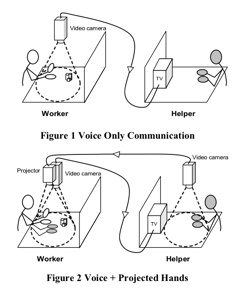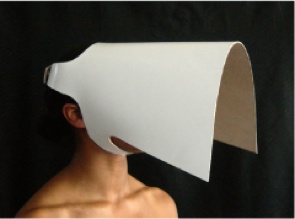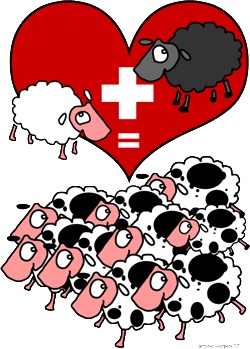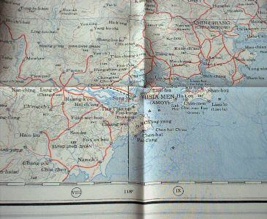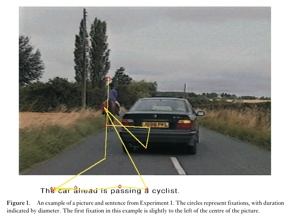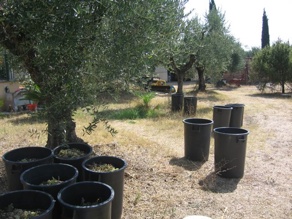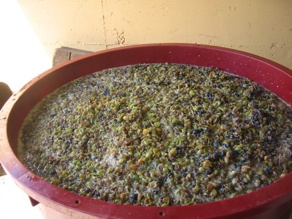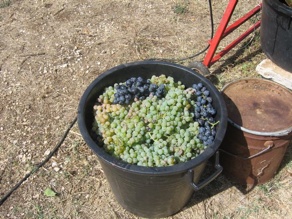There was speech in their dumbness, language in their very gesture.
The Winter’s Tale (First Gentleman at V, ii)
Shakespeare
Author: Mauro Cherubini
Turn it this way: grounding collaborative action with remote gestures
Kirk, D., Rodden, T., and Fraser, D. S. Turn it this way: grounding collaborative action with remote gestures. In CHI ’07: Proceedings of the SIGCHI conference on Human factors in computing systems (New York, NY, USA, 2007), ACM Press, pp. 1039–1048. [pdf]
———-
This paper present a fundamental study for my thesis work. The authors enquired the ability of remote gesturing tools to imporve distance collaborations performance. The authors reported a suggestion from previous work stating that complex gestures rather than simple deixis are responsible for performance enhancement (Fussell et al., 2004).
Their specific question was to understand the impact of complex remote gestures with language taking into consideration the temporal nature of the grounding process. Particularly, performance benefit derived from the use of a remote gesture tool is based on its ability to affect the process of developing common ground (Kirk, D. S., and Stanton Fraser, D., 2006).
Complex use of gestures in interaction can have a variety of other uses in collaborative discourse such as helping to marshal turn-taking and to signal understanding.
The authors use a helper-worker paradigm where the task at hand was the reconstruction of a lego model from diagrammatic instructions. “The system was constructed such that both participants would be in the same room during the study, but only had visual access to each other and each other’s desks through the mediating technology – partitions ensuring that direct visual access was blocked. This enabled us to retain full audio in all conditions without having to use any audio communications technology. Participants were allowed to speak to one another at all times during the study.”
They demonstrated how performance benefits of remote gesture tools appear to be strangest during early stages of an interaction, when remote gestures have the potential to reduce the amount of Workers’ speech. Independently of the phase, questioning behavior from the workers is slightly lessened by gesturing. Also, gesturing is associated with a reduction in the occurrence of speech overlaps.
Their findings demonstrated that performance improvements, already demonstrated by (Fussell et al., 2004) was still true when the remote gestures format was altered from a digital sketch to an unmediated representation of hands.
The authors finally discuss some implications for the deployment of remote gesturing technologies. They suggest three cooperative arrangements that fits into ideal applications of this form of technology.
(1) Non-Routing physical manipulations, where the nature of the task and the settings vary considerably and each cooperative iteration requires significant effort to ground the interaction.
(2) Regular changes in the participants, where common vocabulary of frames of references have to be reestablished frequently.
(3) Rapid cooperative diagnosis settings, where rapid coordination is required in order to decide the best possible actions.
Office collar
This is one of those interesting links I could expect to find in P&V. Office collar is the answer if you work in an open space:
Office Collar has been designed in response to the open plan, working environment. The collars act as spatial isolators, narrowing the field of vision, therefore enabling their wearer to focus on the tasks in front of them. The 15 individual hand made, white leather masks are to be worn on the head; the variation between each model explores the different actions undertaken whilst working and thinking.
[more]
Copyright notice: the present content was taken from the following URL, the copyrights are reserved by the respective author/s.
They actually love black sheeps
Antonio Scarponi sent me this nice picture as a form of graphical protest against a poster published by the Swiss UDC party that was judged racist by the public opinion. I like this form of non-violent protest. Thanks Antonio!
Silk Maps
I got interested in this topic while I was discussing with a friend. He said that in rural India geographical maps are printed on silk as it makes them more resistant. Another advantage of the cloth over paper is that it makes easier folding back the map once used. So I googled around and I found that silk maps were intensively used during WWII [2], they were called Escape Maps:
During WWII hundreds of thousands of maps were produced by the British on thin cloth and tissue paper. The idea was that a serviceman captured or shot down behind enemy lines should have a map to help him find his way to safety if he escaped or, better still, evade capture in the first place. A map like this could be concealed in a small place (a cigarette packet or the hollow heel of a flying boot), did not rustle suspiciously if the captive was searched and, in the case of maps on cloth or mulberry leaf paper, could survive wear and tear and even immersion in water. The scheme was soon extended to cover those who had already been captured, although a certain amount of ingenuity was required to get the maps into the POW camps.
I found this american company that sells some reproduction, and this one which sells silk scarfs with european maps for tourists.
Disambiguating complex visual information: Towards communication of personal views of a scene
Pomplun, M., Ritter, H., and Velichkovsky, B. Disambiguating complex visual information: Towards communication of personal views of a scene. Perception, 25 (1996), 931–948. [pdf]
——–
This paper reports two experiments on perception and eye-movement scanning of a set of 6 overtly ambiguous pictures. In the first experiment it was shown that specific perceptual interpretations of an ambiguous picture usually correlate with parameters of the gaze-position distributions. In the second experiment these distributions were used for an image-processing of initial pictures in such a way that in regions which attracted less fixations the brightness of all elements was lowered. The pre-processed pictures were then shown to a group of 150 naive subjects for an identification. The results of this experiment demonstrated that in 4 out of 6 pictures it was possible to influence perception of other persons in the predicted way.
Manual and gaze input cascaded (magic) pointing
Zhai, S., Morimoto, C., and Ihde, S. Manual and gaze input cascaded (magic) pointing. In CHI ’99: Proceedings of the SIGCHI conference on Human factors in computing systems (New York, NY, USA, 1999), ACM Press, pp. 246–253. [pdf]
———–
This paper presents an experimental setup where 3 different input mechanisms were compared: pure manual, pure gaze, and a mixed approach. The authors’ first claim is that pure gaze interaction mechanism is unatural as it overload a perceptual channel.
The authors tested the different input mechanisms with 36 subjects. Subjects using gaze only pointing performed worst than those using pure manual pointing mechanism. Best performance were achieved with the mixed approach.
This work explores a new direction in utilizing eye gaze for computer input. Gaze tracking has long been considered as an alternative or potentially superior pointing method for computer input. We believe that many fundamental limitations exist with traditional gaze pointing. In particular, it is unnatural to overload a perceptual channel such as vision with a motor control task. We therefore propose an alternative approach, dubbed MAGIC (Manual And Gaze Input Cascaded) pointing. With such an approach, pointing appears to the user to be a manual task, used for fine manipulation and selection. However, a large portion of the cursor movement is eliminated by warping the cursor to the eye gaze area, which encompasses the target. Two specific MAGIC pointing techniques, one conservative and one liberal, were designed, analyzed, and implemented with an eye tracker we developed. They were then tested in a pilot study. This early- stage exploration showed that the MAGIC pointing techniques might offer many advantages, including reduced physical effort and fatigue as compared to traditional manual pointing, greater accuracy and naturalness than traditional gaze pointing, and possibly faster speed than manual pointing. The pros and cons of the two techniques are discussed in light of both performance data and subjective reports.
Inspecting pictures for information to verify a sentence: Eye movements in general encoding and in focused search
Underwood, G., Jebbett, L., and Roberts, K. Inspecting pictures for information to verify a sentence: Eye movements in general encoding and in focused search. The Quarterly Journal of Experimental Psychology 1, 57A (2004), 165–182. [pdf]
—————
This article sheds some light on the following question: when we see combinations of text and graphics, such as photographs and their captions in printed media, how do we compare the information in the two components? The author employed a sentence verification task in which they used the subject to observe a picture with a caption and decide whether the sentence was correcly describing the scene.
They interpreted longer fixations as an indication of more difficult processing. The characteristic inspection pattern or scanpath started with a fixation near to the center of the picture. Within three fixations, typically, their eyes would saccade to the sentence, and they then read the sentence completely before inspecting the picture and made the decision immediately following this second visit to the picture (p.173).
The participants moved their eyes a number of times between the pictures and the sentence, but the decision of the validity of the sentence was taken not while reading the sentence but while viewing the picture. Sentences attracted more fixations than pictures.
The author discussed briefly also the priming effect (Sanocki and Epstein, 1997): the perception of a scene can be facilitated by prior presentation of a priming scene that makes the layout available early.
In the discussion, the authors question the assumption that performance of the sentence verification task requires the construction of a comparable abstract prepositional forms from the sentence and the picture. Larkin and Simon (1987) have argued that although they may contain the same information, the processing operations required to extract the information will not necessarily be equivalent: pictures and diagrams have advantages over textual descriptions. This ease of recognition of relationship from a picture was not reflected in fixation durations. Therefore the author conclude that the richer representations of information in pictures require extensive encoding durations which are comparable to the encoding of information from text.
The universal underlying truth
I have come to believe that the whole world is an enigma, a harmless enigma that is made terrible by our own mad attempt to interpret it as though it had an underlying truth.
Umberto Eco
Vendemmia 2007
Cori, Latina, Italy.

